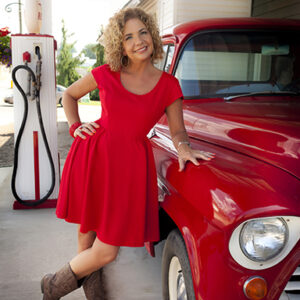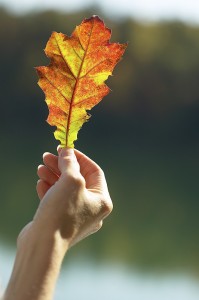This is the first of a three part series on how to live an environmentally responsible lifestyle. Entitled “How to teach green,” it will help you instill respect for the earth in your children.
“I can use both sides of paper for drawing.” Allison, age 8
 “If you turn the water off when you brush your teeth, over a year’s time you can save a lot of water.” Brandon, age 12
“If you turn the water off when you brush your teeth, over a year’s time you can save a lot of water.” Brandon, age 12
The first step is let your children learn about the environment. Learning is the path to caring.
Start simply. Instead of taking your preschooler to a massive nature preserve for a three-hour tour, collect a few leaves from a favorite tree and examine them under a microscope. Let the learning process begin (literally) in their own backyard. Find something they are already familiar with and learn more about it.
Go outside. It may sound simple, but send your children outside. They need to immerse themselves in the environment before they can care about it. If your children are outside at least once every day, they will become attuned to the seasonal changes, as well as the daily changes. When is the sun the brightest? Why? When does dusk fall? Does it change as the seasons change? What color are the leaves? Is the ground muddy or dry?
Let them do it. Your role should be to set up the experience, not try to teach your children everything you know. A windsock, so they can record the wind speeds during the day, or a birdfeeder, can be great learning tools. You set up the experience and let them do the learning. Try something as simple as sitting outside with no speaking or electronic noises – what do you hear?
If you love it, they will. If you enjoy and respect the outdoors, chances are your children will, too. Do you like the park, the lake or the woods? Don’t be intimidated because you don’t have a degree in environmental science. Simply take your children for a walk. Point out the grasshoppers, ants, birds and flowers. Feelings are more important than facts, especially for young children.
Plant something. Whether you have a two-acre garden or a simple window box, planting from seed is a great way to teach children how nature works. And you can’t rush nature. Love, sunshine and water are the only methods that work. So you are also teaching your children patience, not to mention responsibility.
As your children are learning to love and respect the environment, you can incorporate sensible ways to take care of it. We all know about the three R’s – recycle, reduce and reuse. Here are some fun ideas for you to incorporate these R’s into your life.
Hand it over. Have your children hand down, literally, the clothes that no longer fit. Whether to a cousin or a sibling, the ritual of handing a smaller child clothes that you used to wear can be very meaningful. Talk about why we don’t throw away gently used blue jeans, or toss a t-shirt because it has a tiny paint stain.
Go to a farmer’s market. Or a strawberry patch. Or an apple orchard. When you don’t understand that fruit and vegetables come from the earth, it is hard to understand why taking care of the earth is important. When you see the fruit growing on the tree, or the bushels of freshly picked corn, talk about what the earth needs to keep producing healthy food.
Clean your plate. Take what you want, but want what you take. Americans throw away more half-eaten food than most countries consume. One school generates approximately 18,500 pounds of lunch waste every year.
Visit a junk yard. They are interesting and historical. Search them for parts for a soap box car, a repair job, or a clubhouse. Just be safe – there are lots of sharp objects in a junk yard.
Fix it first. When something breaks, attempt a repair job before tossing it. Have your child help you. Can it be repaired to last a little longer? Or perhaps you can take it apart and use the pieces for another project.
Take a trash tour. What happens when you throw it away? Where does it go? How long does it stay there (e.g. until it biodegrades)? Seeing is believing, and a mountainous landfill can make a believer out of your child.
Turn it off. Small steps make a big difference. By turning off the faucet while brushing teeth, your family can save gallons of water each day.
Go online. By downloading tunes, sending an e-mail, or researching a paper via the web, your child will use up less paper and plastic.
Bag it. Instead of paper or plastic bags that are used once and then tossed, children can carry their lunch or library books in a reusable bag. Better yet, be an example to them by taking reusable grocery bags to the market.
Use less. Take a shorter shower every day. Only use the oven when you are baking more than one item. Turn off lights when you leave the room. These are all easy, simple ways to conserve water and energy.
Make it. The next time you are going to a party, use the comic pages from yesterday’s newspaper for wrapping paper. Take old greeting cards, do a little creative cut and paste, and make your own birthday card. Save all your gift bows and bags for reuse, too.
Talk. Discuss what you are doing and why. You can call it environmentalism, land stewardship or just good common sense.
The best way children will learn to care for this world is by watching you. If you continue to lead by example, your child will follow. Teaching environmentalism doesn’t mean never going out to eat, buying a new pair of jeans, or going on vacation. It does mean, with a little planning and effort, you can teach your child responsibility…for his/her possessions, as well as the earth.






























